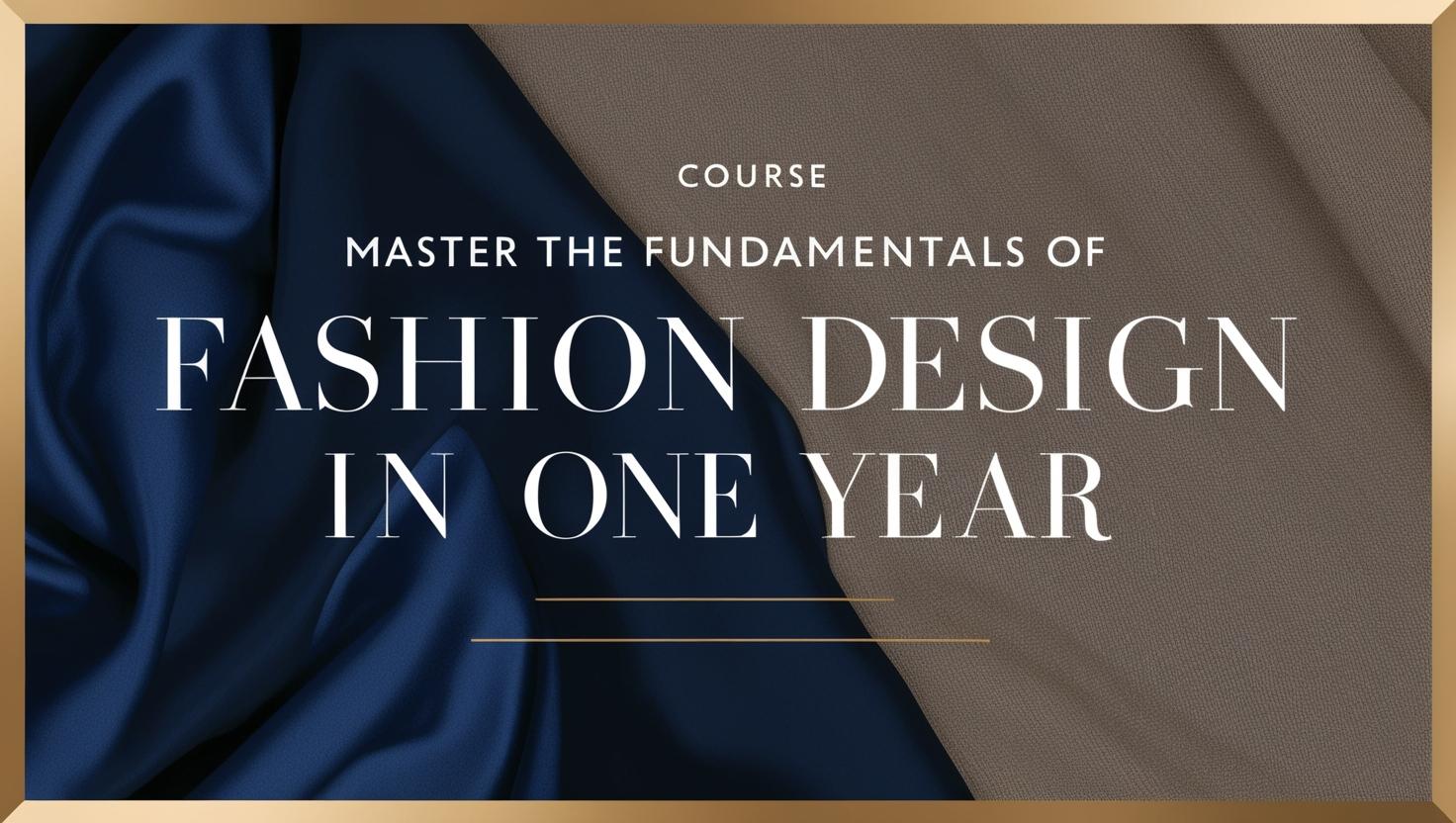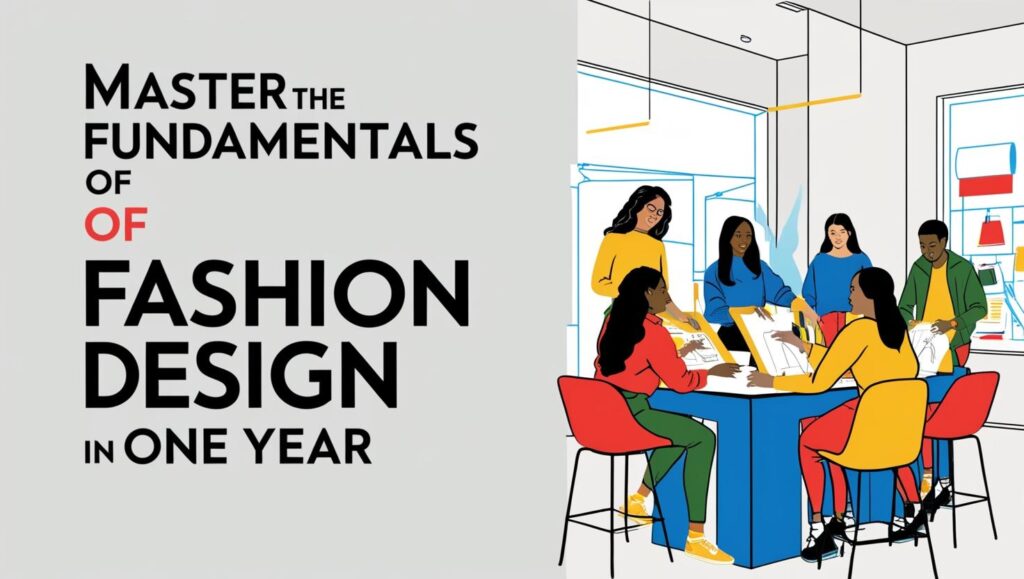
Master the Fundamentals of Fashion Design in One Year
Do you ever dream of making show-stopping outfits that make everyone go wild on runways and red carpets? If so, and the thought of bringing your fashion visions to life thrills you, mastering the basics of fashion design in just one year is not only possible but also very rewarding. Let’s look at how you can make this dream a reality.
What Makes Fashion Design a Unique Art Form?

Fashion design is not just sewing fabric or sketching ideas. It is an intricate dance between creativity, functionality, and cultural storytelling. Every garment tells a story, showcasing the designer’s perspective while resonating with the wearer.
It could be a little black dress for the first time ever in the history of fashion as presented by Coco Chanel. It was not merely a dress; it represented the concept of simplicity and freedom. Similarly, in the process of designing, try to think about how your designs can evoke and pass certain feelings and messages. Step into the realm of color combination, textures, and silhouettes-all these will help you produce some great wearable art.
Can You Learn Fashion Design in One Year?
Absolutely. Mastering essentials can take years, but in 12 months, with the correct tools and dedication, it could be possible. The goal is to divide the process into workable pieces and become consistent.
Start by getting introduced to rudimentary skills like drawing, knowledge about fabrics and building garments. Take on a crash course or a session online that includes ‘get your hands dirty.’ It is important to gain not only technical knowledge of history but also fashion since one knows that the understanding of past fashion trends has shown to predict future fashions, and keeps one ahead creatively.
Close
Sketching and Visualization: The ability to interpret ideas is crucial. Freehand drawing and computer sketching and illustration, for example, with the likes of Adobe Illustrator or Procreate.
Knowledge on fabric: Familiarize yourself with various types of material. Touch, stretch, and study how different things behave. This expertise will guide your choices and brings your designs to life beautifully.
Sewing and Draping: Understand sewing both by hand and using a machine. Draping fabric directly onto mannequins gives you the ability to visualize three-dimensional designs.
Focus on these core skills early on in your education so you are building a good foundation when you experiment with more advanced techniques later on.
Where Do You Get Inspiration From?
Every designer begins by gaining inspiration. Go to museums. Observe nature. Observe people on the street of a city. Pay attention to colors, shapes, and movements.
Storytime: When I began, I was inspired during a visit to a busy farmer’s market. The vibrant colors of fresh produce and the intricate patterns of handmade crafts sparked an idea for a bohemian collection. Keep a journal to jot down these moments; they’ll fuel your creativity when designing.
How Do You Build a Portfolio That Stands Out?
A stellar portfolio is your ticket to internships, clients, and fashion shows. Mix hand-drawn sketches, technical flat designs, and finished garments. Highlight your range by showing different styles and themes.
Don’t be afraid to share the story behind each piece. Was it inspired by a particular cultural tradition? Or was it a response to a modern-day challenge? These narratives add depth and personality to your work.
So, What Next After One Master the Basic Skills?
This is all about networking and growth. Engage in fashion weeks. Join design forums. Collaborate with photographers and stylists. You may even use social media like Instagram and Pinterest as a medium for displaying your work and reaching people from all over the globe.
Fashion is indeed a very innovative and collaborative industry. Keep on learning, experimenting, and pushing the limits to perfect that unique signature style.
Conclusion
You can lay a good deal of groundwork for a career that may be very successful in fashion design in as short a span as one year. This journey requires dedication, creativity, and resilience, but the rewards are well worth it. Are you ready to make designs that would make the world your runway?
